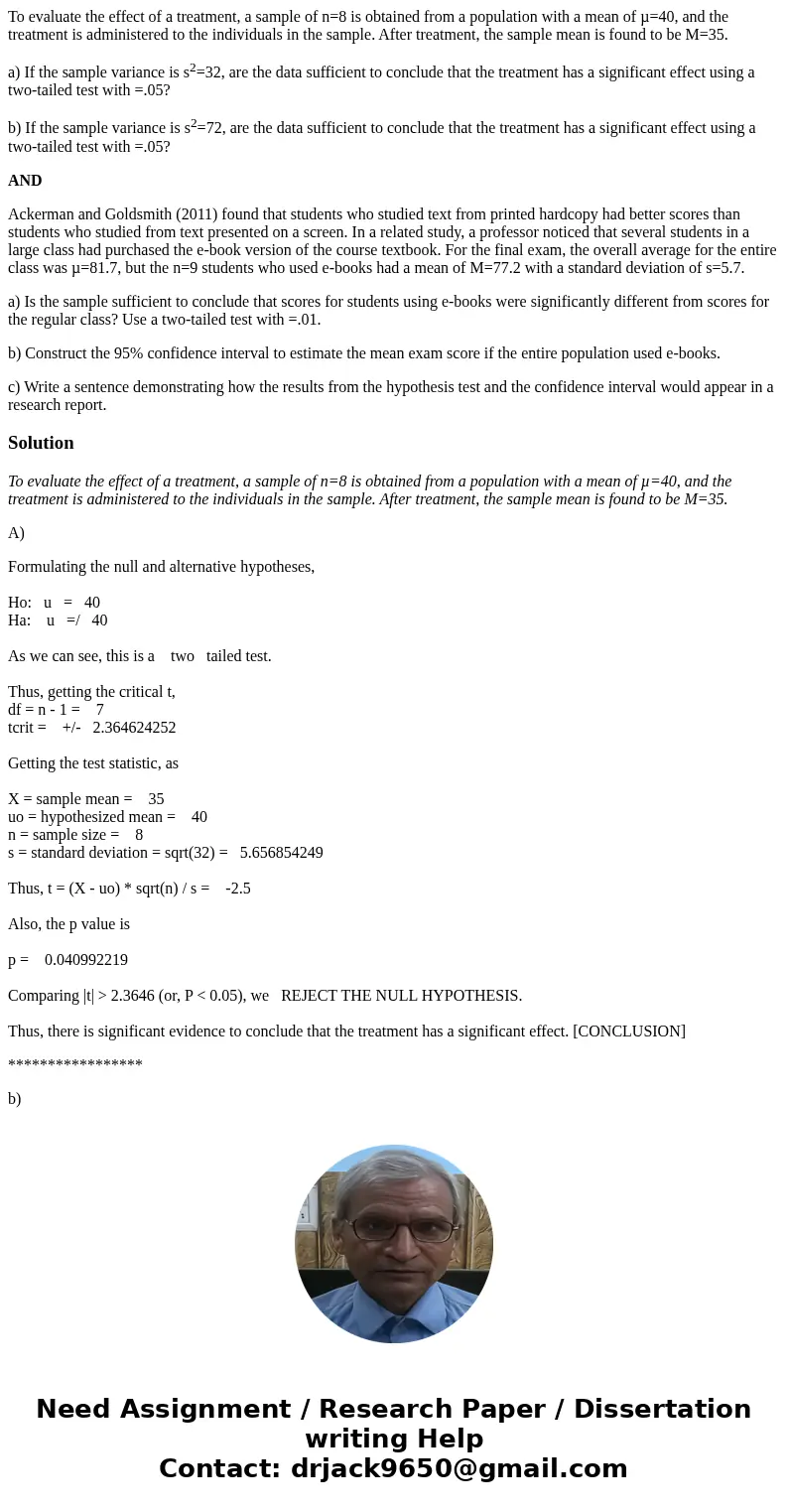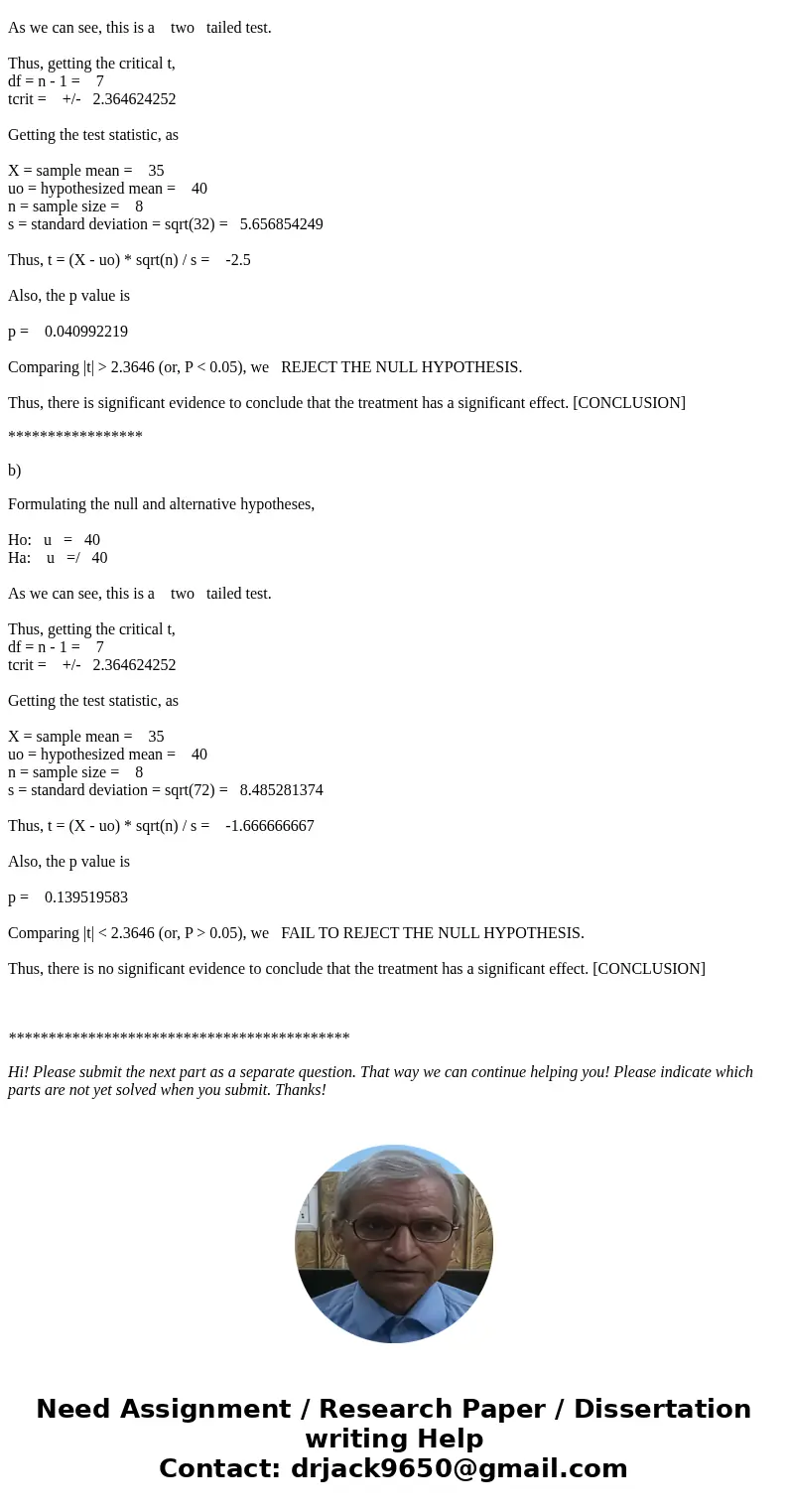To evaluate the effect of a treatment a sample of n8 is obta
To evaluate the effect of a treatment, a sample of n=8 is obtained from a population with a mean of µ=40, and the treatment is administered to the individuals in the sample. After treatment, the sample mean is found to be M=35.
a) If the sample variance is s2=32, are the data sufficient to conclude that the treatment has a significant effect using a two-tailed test with =.05?
b) If the sample variance is s2=72, are the data sufficient to conclude that the treatment has a significant effect using a two-tailed test with =.05?
AND
Ackerman and Goldsmith (2011) found that students who studied text from printed hardcopy had better scores than students who studied from text presented on a screen. In a related study, a professor noticed that several students in a large class had purchased the e-book version of the course textbook. For the final exam, the overall average for the entire class was µ=81.7, but the n=9 students who used e-books had a mean of M=77.2 with a standard deviation of s=5.7.
a) Is the sample sufficient to conclude that scores for students using e-books were significantly different from scores for the regular class? Use a two-tailed test with =.01.
b) Construct the 95% confidence interval to estimate the mean exam score if the entire population used e-books.
c) Write a sentence demonstrating how the results from the hypothesis test and the confidence interval would appear in a research report.
Solution
To evaluate the effect of a treatment, a sample of n=8 is obtained from a population with a mean of µ=40, and the treatment is administered to the individuals in the sample. After treatment, the sample mean is found to be M=35.
A)
Formulating the null and alternative hypotheses,
Ho: u = 40
Ha: u =/ 40
As we can see, this is a two tailed test.
Thus, getting the critical t,
df = n - 1 = 7
tcrit = +/- 2.364624252
Getting the test statistic, as
X = sample mean = 35
uo = hypothesized mean = 40
n = sample size = 8
s = standard deviation = sqrt(32) = 5.656854249
Thus, t = (X - uo) * sqrt(n) / s = -2.5
Also, the p value is
p = 0.040992219
Comparing |t| > 2.3646 (or, P < 0.05), we REJECT THE NULL HYPOTHESIS.
Thus, there is significant evidence to conclude that the treatment has a significant effect. [CONCLUSION]
*****************
b)
Formulating the null and alternative hypotheses,
Ho: u = 40
Ha: u =/ 40
As we can see, this is a two tailed test.
Thus, getting the critical t,
df = n - 1 = 7
tcrit = +/- 2.364624252
Getting the test statistic, as
X = sample mean = 35
uo = hypothesized mean = 40
n = sample size = 8
s = standard deviation = sqrt(72) = 8.485281374
Thus, t = (X - uo) * sqrt(n) / s = -1.666666667
Also, the p value is
p = 0.139519583
Comparing |t| < 2.3646 (or, P > 0.05), we FAIL TO REJECT THE NULL HYPOTHESIS.
Thus, there is no significant evidence to conclude that the treatment has a significant effect. [CONCLUSION]
*******************************************
Hi! Please submit the next part as a separate question. That way we can continue helping you! Please indicate which parts are not yet solved when you submit. Thanks!


 Homework Sourse
Homework Sourse